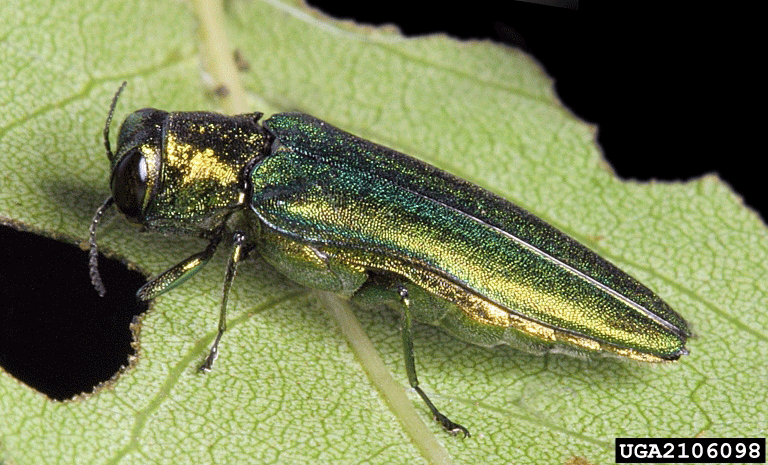 It’s green, it has wings and six legs, and an appetite for ash trees; and it may have found its way to Highland Park.
It’s green, it has wings and six legs, and an appetite for ash trees; and it may have found its way to Highland Park.
It’s called the emerald ash borer, a green beetle native to China and eastern Asia that arrived in North America more than 12 years ago. First found in Michigan in May 2002, the ash borer has spread across the country ever since, including confirmed infestations in 2014 in Hillsborough, Bridgewater, Westhampton. Ewing and West Windsor, according to the state Department of Agriculture.
And now one may have been found Tuesday morning in Highland Park.
“Our landscaping expert at our engineering department was inspecting the landscaping at the new Pulte development, called the Department of Agriculture, and they took a sample,” said Council President Susan Welvkovits. “We’ll know soon, in the next couple days. It could be something else.”
The adult emerald ash borer is a metallic green insect about a half-inch long and an eighth of an inch wide. Female beetles lay eggs on the bark of ash trees; when they hatch, the larvae bore into the bark to the fluid-conducting vessels underneath. As the larvae feed and develop, they cut off the flow of nutrients and eventually kill the tree.
“It is relatively unlikely anyone would see an emerald ash borer out in nature because they are smaller than a penny,” Lynne Richmond, a spokeswoman for the state Department of Agriculture, said in a statement. The department has been monitoring the beetle’s presence in New Jersey.
“Usually, you would know whether the EAB had been there only because of the damage left to the ash tree,” she said. “By then, EAB would have already moved on.”
An infestation of ash borers begins at the top of the tree. Signs of activity can include increased woodpecker activity, dieback in the upper part of the tree, clusters of new branches appearing where old branches have died, and ultimately exit holes in lower parts of the trunk.
Once an ash borer infestation has begun, trees will live an average three to four years, according to the DEP.
“There is no current eradication method for EAB.,” stated Ms. Richmond.
The state fought a similar problem from 2002-2012 with the Asian long-horned beetle. Ultimately, that pest was contained, by removing a reported 21,981 trees in Union, Middlesex and Hudson counties. Nearly a third of those trees were replaced within a year of the Asian beetle’s eradication, with beetle-resistant trees.